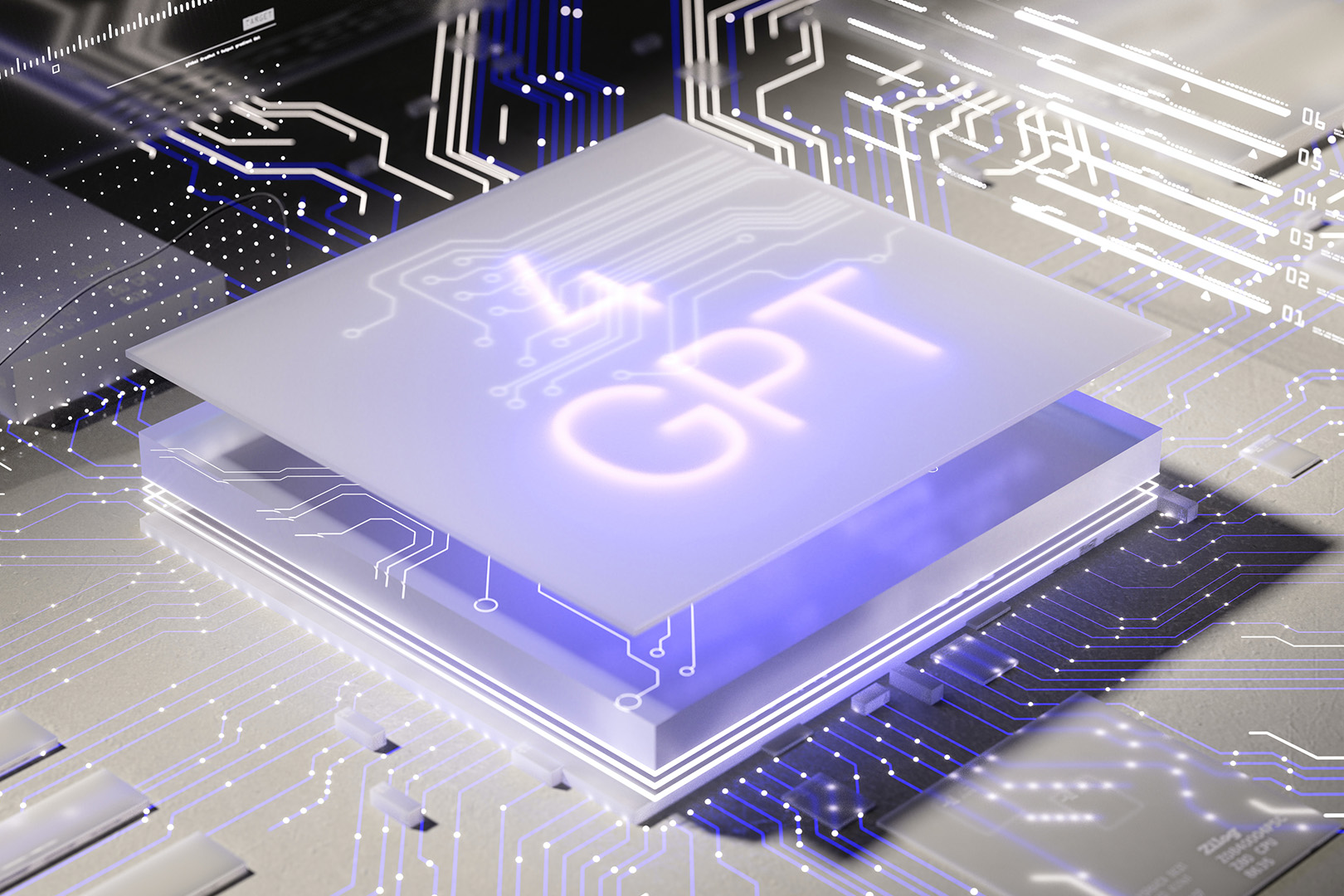
Thousands of years of human history have taught us that a just political system is not possible without separating power. No one should ever have total power over any one thing. When power is concentrated in the hands of too few people, those in power invariably become corrupt. Often corruption is born in bias created under a fog of naivety or groupthink. But sometimes, it is spawned from a devious intent to transfer wealth from an unfavored group to a favored group, or the craving for self-enrichment or a sense of power.
King George taught America’s Founders the disastrous effects of concentrated power. To ensure power could never be concentrated in the new nation they founded, they separated powers into three branches of government in the U.S. Constitution.
Alas, so much has been forgotten.
U.S. Innovation is Driven by Stable and Predictable Patent Rights
The U.S. patent system is the primary driving force behind U.S. innovation. Patents help little guys attract investment into startup companies bringing new technologies to the world. It is this effect that drove the U.S. to lead the world in every technology revolution, from potash processing to the internet and smartphones. Many of these startups grew to become the powerful corporations that built America, including Bell Telephone, IBM, General Electric, and Google, which all attracted their early-stage investment by collateralizing their patents.
For 200 years, the U.S. patent system enabled little guys to unleash patent-backed creative destruction that redirected entire markets and drove lethargic incumbents into the dustbin of history. Huge corporations knew that if they did not innovate fast enough, a startup with better technology could cause them to lose sales and may run them out of business altogether. It stimulated all to innovate faster and better and to protect their inventions with patents.
The foundation of this genius was that U.S. patents were treated like any other personal property right. The Executive Branch granted the patent right, but only the Judicial Branch could take it away. This separation of power meant that duly issued patents were difficult to invalidate, and that created a strong presumption of validity to encourage investment in new technologies.
That was then. This is now.
Concentrating Power Destroyed the U.S. Innovation Engine
Starting in the early 1980s, Congress began concentrating power over patent law onto fewer and fewer people with the creation of the Court of Appeals for the Federal Circuit (CAFC), thereby concentrating power over all patent law into the hands of just 12 judges.
Whether by naivety, groupthink, or just plain corruption, the CAFC has changed patent law in multiple ways that negatively affect the stability and predictability of patent rights. It has changed prior art scope, obviousness, priority, injunctions, venue, patent construction, error correction, disclosure requirements, abstract idea doctrine, invalidation procedures, and more. It also destroyed any presumption that a patent is valid, rendering patents to uninvestable assets, especially for startups brandishing disruptive technologies.
The net effect of the CAFC’s body of case law is to ensure that patent applications are denied, granted patents are invalidated, damages are reduced, costs of defending patents skyrocket, years are added to litigation, and patent owners are thrown out of court or rewarded with liabilities.
The CAFC snubs the mess they created by refusing to correct obvious problems with their case law by issuing countless Rule 36 affirmances – these are one-word decisions that simply say “affirmed” with no discussion and no rationale. Inventors are left in a quagmire of uncertainty.
In 2011, Congress concentrated even further power. This time, they created an administrative tribunal called the Patent Trial and Appeal Board (PTAB) with the power to adjudicate the validity of patents. The PTAB is a division of the United States Patent and Trademark Office (USPTO) and is under its control. The USPTO has always had the exclusive power to issue patents, but now it also has the power to take them away. PTAB trials lack due process, juries, witness cross-examination, and a code of conduct for administrative patent judges. It restricts critical evidence, has lower standards of proof, allows hindsight bias, and requires no standing. It is a political court with dictatorial power to both grant and take away the same patent concentrated into one person, the USPTO Director.
Dictatorial power does what it always does. Since its creation, the PTAB has invalidated 84% of the patents it fully adjudicated, destroying any belief in the presumption that a patent will be held valid. The resulting uncertainty has disillusioned investors, causing them to invest significantly less in U.S. startups and move their investments to other countries like China.
Congress should have expected these results when they concentrated power over U.S. innovation into the hands of just 13 people – 12 CAFC judges and the USPTO Director. After all, history shows absolutely that power corrupts, and absolute power corrupts absolutely. While it is uncertain if these 13 people are acting under a fog of naivety or groupthink, or by the corrupt intent of transferring the wealth of a disfavored group to a favored group, the damage to the U.S. innovation is extreme. We now have Big Tech monopolies, and China leads the world in 37 of 44 technologies critical to our national security and economic growth.
From the perspective of inventors and startups, the patent system is a game of bait and switch. Inventors naïvely believe that patents will protect their inventions, found startups, and move forward to commercialize or license their patented inventions. After they have invested their hard work and scant resources to prove a market for the invention, huge multinationals just steal the technology and massively commercialize it, running the startup out of business and sending the inventor and any investors into financial ruin.
This is not how a nation encourages innovation.
The Appellate Court System
In the Federal Court system, there are more than 600 federal judges organized into 12 Circuits. Each Circuit has its own Court of Appeals that reviews cases decided in that Circuit. The CAFC is the 13th Court of Appeals and has exclusive appellate jurisdiction over all cases involving patents and a few other things.
Decentralized Power is a Good Thing
The Judicial Branch, whether by plan or necessity, distributed its power geographically across the United States to over 600 federal judges. Federal judges are lifetime appointed and do not have a reporting hierarchy, so orders cannot be passed by the chain of command. Federal judges report only to the U.S. Constitution and their conscience. A bad decision by a federal judge can be overruled by a higher court, but nobody can tell a federal judge what to do.
The judicial branch’s distribution of power combined with independent federal judges with no chain of command makes it practically impossible to corrupt the entire system. For the same reasons, corrupting all 12 Circuit Courts of Appeals is nearly impossible.
Forum Shopping and the Creation of the CAFC
This structure distributed power over patent law to 12 Courts of Appeals. Each developed case law based on their own interpretation of the law and the Constitution, which created slightly different sets of law for each Circuit. Depending on the issue, one Circuit may favor the plaintiff, and another the defendant. Inventors filed patent infringement cases in a Circuit most favorable to them. Likewise a form of a reverse patent infringement lawsuit, called a declaratory judgment (D.J.), can be filed by infringers in a Circuit most favorable to them. This became known as “forum shopping”.
Corporate lobbyists flooded the halls of Congress with stories of huge corporations losing patent infringement cases because case law on a particular issue in that Circuit was not as favorable as similar case law in another Circuit.
What they did not tell Congress is that forum shopping is a two-way street. Certainly, an inventor can file a patent infringement suit against an infringer in a Circuit they choose, but an infringer can also file D.J., which places the suit in the Circuit they choose.
The corporate lobby argued that a single Court of Appeals must be created to handle all patent-related appeals so that patent law could be stabilized and unified for the whole country. This, they said, would put an end to forum shopping.
Ignoring the risks of concentrating power over U.S. innovation into the hands of just 12 unelected judges, Congress bought the corporate narrative and created the CAFC with the Federal Courts Improvement Act of 1982.
Corrupting the U.S. Innovation System
When the CAFC was created, its initial judges were carefully selected to stabilize patent law. Most were pro-patent and understood that a stable and predictable body of patent law advances U.S. economic growth and national security. Initially, the goal was accomplished, bringing incredible innovation and enormous economic growth in the next couple of decades.
Over time, the initial set of judges died or retired, and new judges, not so favorable to U.S. innovation, were put in place.
The selection and appointment of judges is a political process. Judges are nominated by the President and confirmed by the Senate. Issues decided by the 12 Circuit Courts of Appeals are often politically noisy. Circuit Courts of Appeal are often the final decision on politically charged issues such as abortion and gun rights. Because these issues are divisive among the folks back home, the nomination process becomes a grandstanding event for Senators, who use it to drive a narrative that fires up their base. The media amplifies the political firefight to sell advertising. In the end, most people back home know the issues surrounding a Court of Appeals nomination.
Unlike the 12 Circuit Courts of Appeals, the CAFC does not handle politically noisy issues. They handle patent law, not the subject matter that fires up the base. In fact, very few people understand the patent system’s importance to their prosperity or our national security. So, the nomination process for CAFC judges is politically silent, with most nominees passing muster often without question. The same politically silent process brings us the USPTO Director.
If no Senator is willing to scrutinize a nominee, the nominee is simply rubberstamped. Large corporations have abundant access to the President, and they do not want their markets disturbed by uppity startups with patented inventions. So, they present to the President a slate of CAFC and USPTO Director candidates that are favorable to their corporate interests.
Whether due to workload or a desire for campaign contributions, most Presidents nominate candidates from that corporate slate.
This politically silent nomination process has brought CAFC judges and USPTO Directors who are anti-patent and favorable to the interests of large corporations. This is a major factor in the monopolization of Big Tech, and why China now leads the world in technologies critical to our national security and economic growth.
Forgetting the lessons of history have profound consequences.
It’s Time to Reseparate and Redistribute Power
For over 200 years, the patent system drove the growth of U.S. innovation at a scale not known in human history. But power over patent law is now concentrated in the hands of just 13 unelected people. Whether by naivety and groupthink or by intention, the U.S. innovation engine is corrupted. That has caused wealth to be concentrated in huge monopolies and U.S. innovation to fall behind the rest of the world, including China.
U.S. Innovation must be restored, which can only be accomplished by unwinding the mistakes we made in concentrating and centralizing power. Power over the patent system must be reseparated and redistributed as it was for our first 200 years.
To redistribute it, the CAFC must be stripped of its power over patent law and sent back to the 12 Circuit Courts of Appeal, where it cannot be corrupted.
To reseparate it, the PTAB must be eliminated. No single person should ever hold total power over both issuing patents and taking them back. That is the primary reason that the U.S. fought a revolution, and it is exactly contrary to the founding principles of this nation.
Paul Morinville is Founder and Executive Director of SPARK Innovation. SPARK Innovation strives to create an policy environment where the conception, protection, and commercialization of technologies critical to our economic and national security prosper thereby enabling the United States to take back the global technological lead from China. Paul is an inventor and has been an executive at multiple technology startups including computer hardware, enterprise middleware, video compression software, artificial intelligence, and medical devices, and has licensed patents in the U.S. and China.







Start reaching out to alternative media immediately.
Can I republish it on my web sites? With my own graphics.
Jacek, Reference it was first published on Innovation Gadfly and name the author.
We are building vibrational devices that have entertainment and health assets. The latest driver is waterproof and magnetically mounted. I have a number of parents issued on this technology and just filed another provisional.
I would be honored to have your opinion on this device and welcome any advice you might have for protecting and promoting this technology.
Thomas Fenner
Very informative and concise on how the Patent system was hijacked